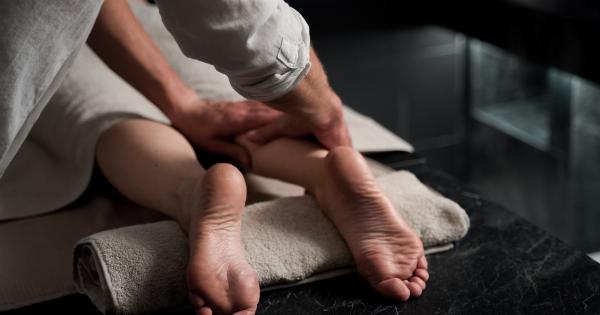Plantar fasciitis is a common type of heel pain that affects millions of people worldwide. It is a condition that occurs when the plantar fascia, a thick band of tissue that connects the heel bone to the toes, becomes inflamed and irritated.
This can cause heel pain and discomfort, especially in the morning or after long periods of standing or walking.
Symptoms of Plantar Fasciitis
The symptoms of plantar fasciitis usually include:.
- Sharp pain in the heel or arch of the foot
- Pain that is usually worse in the morning or after long periods of standing or walking
- Tenderness or soreness in the heel or arch of the foot
- Stiffness in the heel or foot
- A burning or tingling sensation in the foot
It is important to see a doctor if you experience any of these symptoms, as untreated plantar fasciitis can lead to chronic pain and other foot problems.
Treatment for Plantar Fasciitis
There are a number of treatment options available for plantar fasciitis, depending on the severity of the condition. Common treatment options include:.
Rest and Ice
One of the first things a doctor will recommend for plantar fasciitis is rest and ice. This can help reduce inflammation and ease pain.
Resting the foot as much as possible and applying ice to the affected area for 20 minutes at a time, several times a day, can help speed up the healing process.
Stretching and Exercises
Stretching exercises can help relieve tension on the plantar fascia and improve flexibility in the foot. Toe curls, heel raises, and stretching the Achilles tendon can all be helpful exercises.
A doctor or physical therapist can recommend the best exercises for each individual case.
Orthotics and Shoe Inserts
Orthotic devices and shoe inserts can help support the foot and relieve pressure on the plantar fascia. Custom orthotics can be made to fit each individual foot, while off-the-shelf inserts can be purchased at a pharmacy or sporting goods store.
Medications
Over-the-counter pain medications, such as ibuprofen or acetaminophen, can help relieve pain and reduce inflammation. Topical creams and ointments can also be used to ease pain and improve circulation in the affected area.
Surgery
In severe cases, surgery may be necessary to release the tension on the plantar fascia. This is usually only recommended after other treatments have failed to improve the symptoms.
Preventing Plantar Fasciitis
There are a number of things that can be done to help prevent plantar fasciitis, including:.
- Wearing comfortable, supportive shoes with good arch support
- Stretching the feet and legs regularly, especially before and after exercise
- Avoiding high-impact activities that put a lot of pressure on the feet and legs, such as running or jumping
- Maintaining a healthy weight to reduce pressure on the feet and legs
By taking these steps, individuals can reduce their risk of developing plantar fasciitis or experiencing a recurrence of the condition.




























